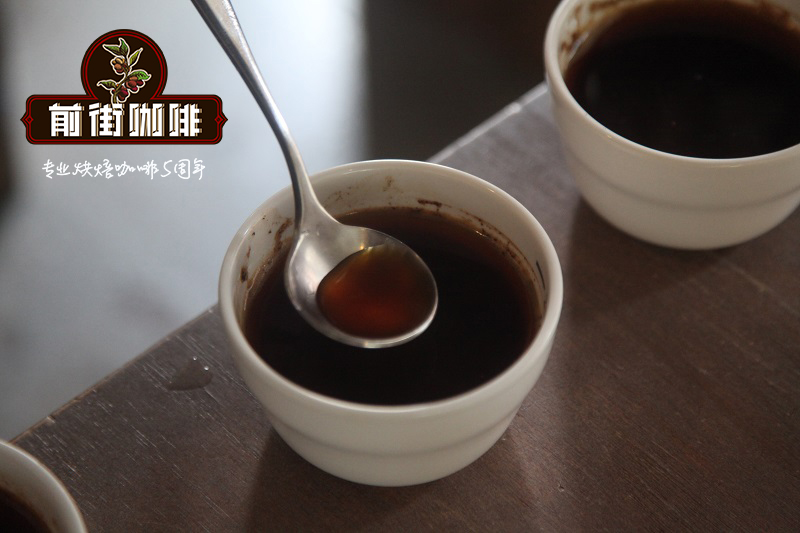The Origin of Ugandan Coffee Robota beans the flavor and characteristics of Ugandan coffee

Professional coffee knowledge exchange more coffee bean information please follow the coffee workshop (Wechat official account cafe_style)
Uganda (Uganda)
Uganda ranks eighth in the world in coffee production, on a par with Peru and second in Africa after Ethiopia. Each year, Uganda typically produces 3 million to 4 million bags of 60-kilogram coffee, accounting for only 2-3% of global production, far less than big producers such as Brazil (55 million bags) or Vietnam (25 million bags). The main variety grown by Ugandan farmers is Robasta, which is of poor quality and is usually used for commercial mass production, such as Folgers coffee, rather than selling it to sophisticated coffee connoisseurs.
However, over the past century, coffee has been promoted to the most important and valuable industry in Uganda, worth more than US $400 million. Coffee accounts for 20% of Uganda's national export revenue, and the Ugandan Coffee Association (Uganda Coffee Federation) estimates that there are about 8 million Ugandans in 1 gamma, with most or all of their income coming from coffee. About 90% of the country's coffee is produced by small farmers.
On the western slope of the Egon Mountains near the Kenyan border in the east, a very good Arabica bean, called buckyasu, is produced, which is similar in flavor to Kenya, but with a thinner texture.
To find Ugandan coffee with good performance, you must first recognize the three grades of BugisuAA, An and PB, but because the country is inland and has many transportation problems, it often comes to raw beans with low moisture content and not emerald green appearance, but Ugandan coffee is not a type of coffee that emphasizes aroma, as long as the raw beans are not and turn 100 or yellowed, they can generally have a good flavor performance in the producing areas. It has a low ripe fruit aroma, such as the taste of red wine, and a thick mellow thickness, which is similar to some Kenyan beans with low tone, but with a mild soil flavor, so it is quite different from other East African countries in flavor characteristics. on the contrary, it is somewhat similar to Asian Indonesian Sulawesi Tonaga coffee and Java state-owned manor coffee. The baking degree between City and Full City is all better.
The birthplace of Luodou
Since Ethiopia is the birthplace of Arabica coffee, Uganda is the hometown of Luodou. At first, the British encouraged the cultivation of Luoda, a low-altitude species, in Uganda. Today, Uganda has become the second largest exporter of Luodou in the world. Today, Luo Dou has been regarded by many people as inferior beans, Luo Dou is still enduring humiliation. In fact, if carefully cultivated and planted, Luodou has been considered by many people in the industry to be a species of great value. However, people narrowly mix it into other coffees to make Italian concentrate. Poor Robusta.
Some groups are trying to ensure that the planting procedures in Robsta, Uganda are correct and consistent. Many institutions are leading the effort, such as LEAD (the World Organization for Agricultural Development for livelihoods and Enterprises), an American organization that works to improve coffee quality and the income of coffee farmers in Uganda. The Coffee quality Association (CQI) is also involved, and in August 2009, CQI hosted a meeting in Uganda, one of which was to establish an agreement on the quality of robusta coffee. Ted Ringer, executive director of CQI, believes Uganda's Robusta will soon emerge from the shadows. "it seems to me that Uganda is going to end its main supply of high-quality robusta coffee because of its history, tradition and experience in producing washed robusta coffee," he said. just as Colombia is the main supply of high-quality Arabica coffee. "
Eighty-five percent of the coffee farmers in the country are producing rosebeans. Because the economic benefits of growing medium-fruit coffee (Luodou) are much greater than those of Arabica. "for Americans, there is no way to find reliable suppliers in Uganda," Ringer said. The baker has no way to bake bad beans into good ones. Therefore, our task is to set standards for the quality of Luodou in Uganda. Only in this way can the quality of Luodou imported into the United States be guaranteed. Only in this way can the concept of "boutique Luodou coffee" be widely spread. Rather than "quantity", we prefer Uganda's Luodou coffee to a qualitative leap. Only in this way can Luodou farmers see the same hope as Arabica farmers.
The arrival of Arabica
Uganda began to grow Arabica beans a hundred years ago. Today, most of the country's Arabica is grown in the southeast of Mount Elgon, 4321 meters above sea level, and some grow along the border between Uganda and Kenya. The Bugiso region, which contains almost the entire Elgon Mountains, one of the oldest volcanoes on the continent, provides fertile soil for the growth of Arabica. Looking ahead, the hillside is covered with endless coffee trees, including other crops, such as bananas, corn, avocados, and some other beans. What a diversified planting area.
In addition to the above-mentioned areas, there are other areas that stand out, such as the coffee cultivation of Cajuva is also very developed. Recently, the Uganda Coffee Development Authority (UCDA) has changed its export approval rules to allow new names for mixed containers and emerging subregions. The raw bean cleaning station is under construction, and farmers' groups have joined the trade union. The average size of each small Arabica farm is 0.36 hectares, or 0.9 acres, and can produce high-quality Arabica coffee. Mainly Typica and Kent. Its total production is 15% of the whole country.
Location: located in the Great Lakes region of Africa, bordered by Uganda and the Democratic Republic of the Congo in the west; North Sudan; Kenya in the east; Lake Victoria, Tanzania and Rwanda to the south.
Capital: Kampala
Official language: English. Also Ganda or Luganda, Niger-Congo, Nile-Sahara, Swahili, Arabic.
Monetary unit: shilling
Overview of Ugandan Coffee
Producing areas: Bugisu (Mount Elgonne), Lake Victoria Basin, Western Uganda, West Nile
Treatment: insolation and washing. Drugar (such as sun exposure) and wugar (water washing).
The British Imperial rating system is still used: AA,A,B,C,PB (Bean), E (Elephant)
Harvest season: October to February. The farming period is from April to August; flying crops (harvest in the second season with fewer flowers and less high-quality fruit)
Exports: the country is inland, so goods must travel by truck or rail to the seaport of Mombasa (Kenya) or Dar es Salaam (Tanzania) via neighboring countries.
Arabica, altitude: 1300-2300 m
Robusta: 9-1500 meters above sea level
Number of small farms: 500000
Number of households with income from coffee: 3.5 million
Average output value: 3 million bags
Arabica variety: Kent, typica,SL-14,SL-28
END
Important Notice :
前街咖啡 FrontStreet Coffee has moved to new addredd:
FrontStreet Coffee Address: 315,Donghua East Road,GuangZhou
Tel:020 38364473
- Prev

Is Angolan coffee grown in Angola, the fourth largest coffee producer, good?
Professional coffee knowledge exchange more coffee bean information please follow the coffee workshop (Wechat official account cafe_style) mention Africa, people's first impressions are: desert, drought, tribe, poverty, mystery and so on. Because of its climatic environment, it has become a paradise for the growth of coffee trees. Angola is one of the fourth largest coffee producers in the world. From 1975 to 1976, every country
- Next

The main producing area of Angolan coffee the characteristics of Angolan coffee
Professional coffee knowledge exchange more coffee bean information please follow Coffee Workshop (Wechat official account cafe_style) Angola (Angola) Angola is one of the fourth largest coffee producers in the world. Between 1975 and 1976, the country produced 1 million bags of coffee a year, most of which were exported. However, thirty years of civil war has caused great damage to the people and economy of this country.
Related
- What documents do you need to go through to open a coffee shop? coffee shop coffee shop certificate processing process
- How to purchase Coffee beans in small Cafe how to choose a suitable supplier for domestic Coffee supply Company
- How to drink Starbucks Fragrance White Coffee? how to make Australian White Coffee? what Italian coffee beans are recommended?
- The Story of Flora Coffee: the name of Flora Coffee Bean and the implication of the Flowers on Florna Coffee
- How much does a cup of coffee cost? How much is the profit of a cup of coffee? What is the profit of the coffee shop in a year?
- Yunnan small Coffee, known as "fragrant Coffee", introduces the characteristics of Alpine Arabica Coffee producing areas in Yunnan, China
- 2023 latest Starbucks full menu price list how much is a cup of Starbucks coffee what is better to drink the most popular hot and cold drinks recommended
- Starbucks different kinds of Coffee Price list Starbucks menu 2023 Top Ten Best drinks in Starbucks
- Starbucks Spring praise Comprehensive matching Coffee Bean theme Story Packaging implication and taste description
- The cost of a cup of coffee latte American coffee cost price and selling price

